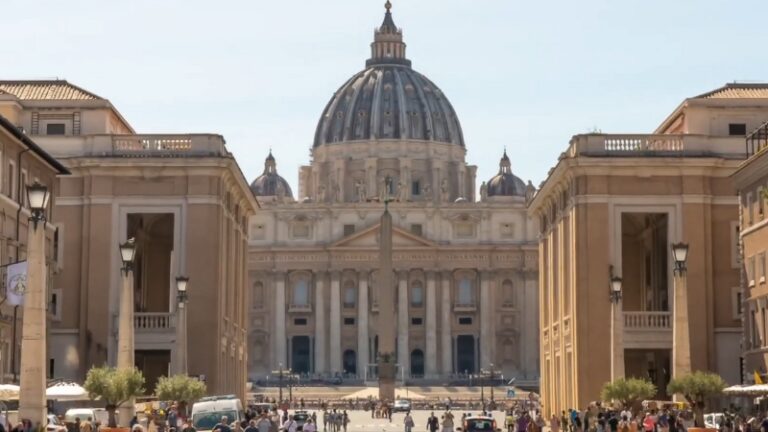Most people make a beeline for the Vatican—and yeah, it’s a powerhouse. St. Peter’s Basilica is massive, stunning, and genuinely moving. But it’s just one part of the picture.
Rome is loaded with churches, shrines, relics, and holy spots that have shaped Catholic history and spirituality for almost 2,000 years.
Some are tucked into side streets. Others tower over entire neighborhoods. But all of them carry stories worth hearing.
1. Basilica of Saint John Lateran (San Giovanni in Laterano)
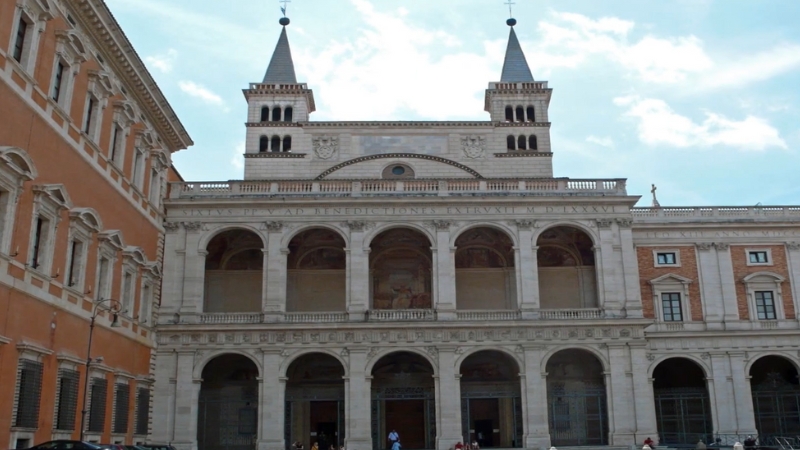
Let’s start with a curveball: the Pope’s actual church isn’t St. Peter’s.
Yep—Saint John Lateran is the official cathedral of the Bishop of Rome (that’s the Pope), and it’s older than the Vatican.
This place dates back to the 4th century and carries the weight of so many historic councils and declarations that even non-Catholics can feel the gravity.
What to Look For
- The Holy Door, only opened during Jubilee Years
- The towering statues of the Apostles inside
- A cedar wood table said to be used by Christ at the Last Supper
2. Santa Maria Maggiore
One of the four major basilicas in Rome, and it’s open 24/7. That alone says something.
The story goes that in the 4th century, the Virgin Mary appeared to a Roman couple and told them to build a church where snow would fall on August 5th. Snow fell.
In Rome. In August. So they built it.
The church’s architecture is a bit of a timeline—it moves from ancient mosaics to baroque chapels to Renaissance flourishes.
Why Go
- The oldest Marian church in the city
- Houses a relic of the Holy Crib (fragments of the manger)
- Stunning golden mosaics from the 5th century
3. San Clemente Basilica
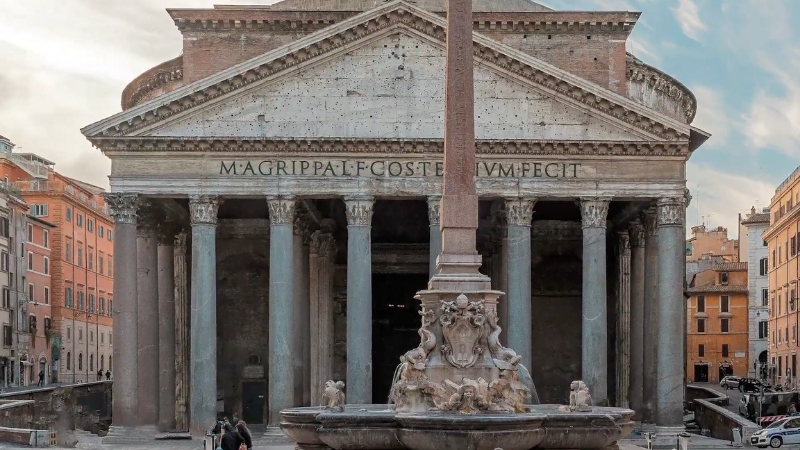
At street level, you’ve got a 12th-century basilica. Beautiful, quiet, peaceful. But head downstairs and you’re in a 4th-century church.
Go lower and you’re in a 1st-century Roman house that was once used for Christian worship.
Three levels of history, stacked like lasagna.
You can walk through centuries of Rome’s transformation from pagan to Christian, all in one spot.
Highlights
- Mosaic of the Tree of Life in the apse
- A 1st-century Mithraic temple (pagan worship)
- You can literally hear water from an ancient Roman aqueduct still running below
4. Church of Saint Peter in Chains (San Pietro in Vincoli)
View this post on Instagram
Up a steep hill from the Colosseum sits a smallish basilica with something epic inside, Michelangelo’s statue of Moses, carved with such detail that his muscles look ready to twitch.
But the main draw here? The actual chains that bound Saint Peter when he was imprisoned in Jerusalem.
Legend says they miraculously fused with another set of chains from Rome when Pope Leo I brought them together.
Things to Check Out
- The Moses statue is intense. He’s got horns due to a Latin translation flub of the word “rays”—true story.
- The glass case under the altar holds the famous chains
- A surprisingly quiet stop, despite its fame
5. Basilica of the Holy Cross in Jerusalem (Santa Croce in Gerusalemme)
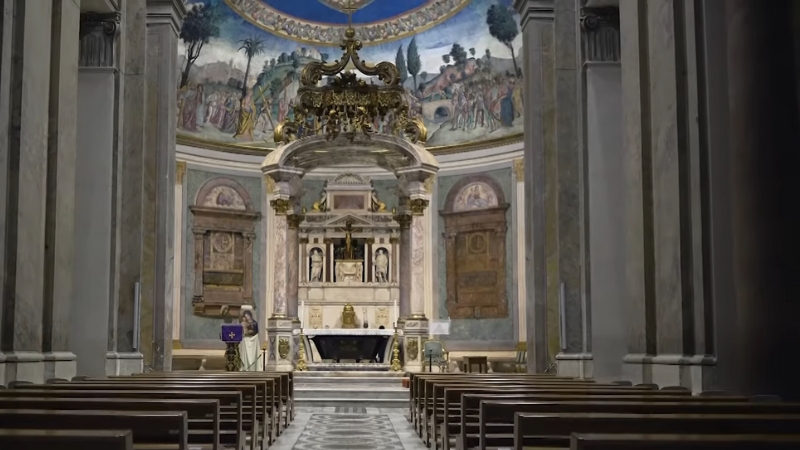
Tucked in a quiet corner of southeast Rome, Santa Croce doesn’t scream for attention—but that’s part of its pull.
The basilica has a lived-in holiness that feels worlds away from the glitz of central Rome. And its name isn’t just poetic.
It literally contains soil from Jerusalem, brought here in the 4th century by Saint Helena, mother of Constantine the Great, so Rome could hold a spiritual piece of the Holy Land.
Why It Matters
Saint Helena went to the Holy Land on what might have been history’s first Christian pilgrimage.
She came back with what she believed were authentic relics from Christ’s Passion and had this basilica built to house them.
Today, they’re kept in a glass case in the chapel at the back, and yeah, it’s humbling.
What You’ll See
- A splinter from the True Cross
- Two thorns from the Crown of Thorns
- A nail said to be used in the Crucifixion
- Part of the sign Pontius Pilate nailed above Jesus’ head (“INRI”)
- The finger of Saint Thomas (as in “Doubting Thomas”)
6. Basilica of Saint Paul Outside the Walls (San Paolo Fuori le Mura)
@yourfriendinitaly San Paolo fuori le mura is one of Rome’s four major papal basilicas, alongside St. Peters basilica, Santa Maria Maggiore, and San Giovanni in Laterano – and it’s a must-see if you’re visiting Rome during the Jubilee Year. #jubilee2025 #sanpaolofuorilemura #holydoor ♬ original sound – Brianne Bartolini | in Italy
Big, bright, and weirdly peaceful, Saint Paul Outside the Walls is the spiritual counterbalance to the Vatican.
If Saint Peter is the rock, Saint Paul is the firebrand, the missionary who wrote most of the New Testament. This basilica stands over what’s believed to be his tomb, and it’s one of the four major basilicas in Rome.
First Impression
From the outside, it’s a mix of neoclassical columns and swaying palm trees (seriously, it’s almost tropical).
Inside? Light floods through alabaster windows, washing everything in a soft, golden glow. The effect is serene, almost like a spiritual detox from the buzz of Rome’s center.
Must-See Details
- Tomb of Saint Paul, under the altar, marked with a marble slab etched with “PAULO APOSTOLO MART”
- A long corridor of round mosaics depicting every single pope from Peter to the current one
- Gigantic columns that mimic early Christian basilicas
- Peaceful cloister with twisting marble pillars and well-tended gardens
7. Santa Maria in Trastevere
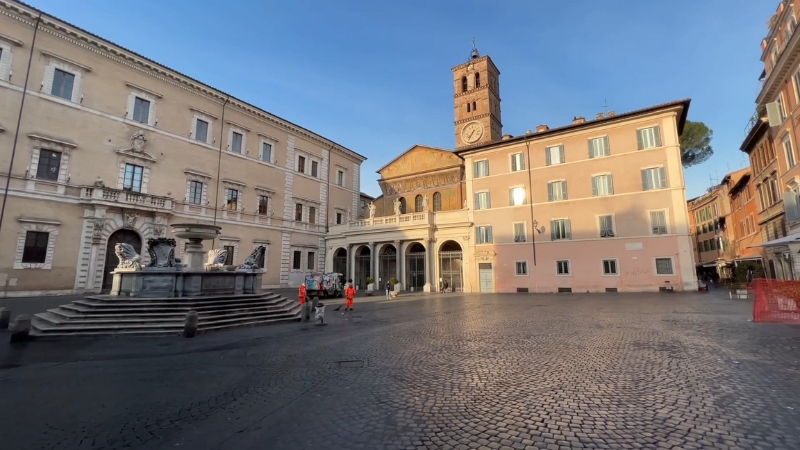
Let’s shift gears. This one’s got charm written all over it.
Santa Maria in Trastevere sits in the heart of the Trastevere neighborhood—Rome’s bohemian quarter filled with ivy-draped buildings, wine bars, and wandering musicians.
But the basilica itself is ancient. It’s believed to be the first church in Rome dedicated to the Virgin Mary, and possibly the first one where Mass was publicly celebrated.
The Vibe
It doesn’t feel like a museum. It feels like a home church—welcoming, golden, alive. Candles flicker quietly at side altars, and older locals still pray the rosary aloud in pews.
There’s something both timeless and personal about it.
Highlights
- The 12th-century golden mosaic above the main altar—Mary and Christ enthroned, surrounded by saints and palm trees
- The portico mosaic on the front of the church glows dramatically at sunset
- Cosmatesque floors—those intricate geometric inlays in red, green, and white marble that you’ll see in a few Roman churches
- Side chapels with quiet, stunning frescoes—and usually no crowd
8. Basilica of San Lorenzo Outside the Walls (San Lorenzo Fuori le Mura)
You’ll feel like you’re stepping into another century at San Lorenzo. It’s not a tourist magnet. It’s a working church in a working-class neighborhood, and the basilica’s simplicity makes it feel all the more sacred.
Backstory
Saint Lawrence was a Roman deacon martyred in 258 AD—legend has it he was roasted alive on a grill, and his final words were, “Turn me over, I’m done on this side.” That grit? You feel it in the stones here.
What Makes It Special
- The tomb of Saint Lawrence, right below the altar
- A beautiful, slightly faded 6th-century mosaic of Christ flanked by Saints Peter and Paul
- Remnants of earlier basilicas integrated into the current structure
- The grave of Pope Pius IX—one of the longest-reigning popes in history
9. Church of the Gesù (Chiesa del Gesù)

Now let’s talk about something bold. The Church of the Gesù is basically the birthplace of Baroque architecture—and it’s got the drama to prove it.
Why It Matters
This is the mother church of the Jesuit order, founded by Saint Ignatius of Loyola. If you know anything about the Jesuits, you know they don’t do things halfway. This church is as much a statement as a sanctuary.
What to Look For
- The ceiling fresco, The Triumph of the Name of Jesus by Baciccio, is insane. Figures burst out of the ceiling like they’re flying into your reality.
- Tomb of Saint Ignatius of Loyola, in a side chapel filled with lapis lazuli, gold, and colored marble
- Reliquary holding the right arm of Saint Francis Xavier, who baptized thousands across Asia
10. San Sebastiano fuori le mura (Saint Sebastian Outside the Walls)
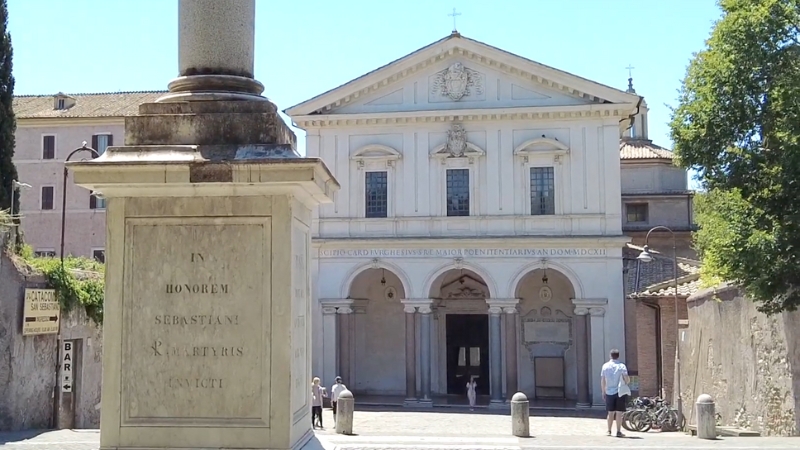
Last stop—but don’t gloss over it. San Sebastiano sits along the Appian Way, one of the oldest roads in Rome.
You’ll get more than a church here—you’ll get catacombs, relics, and a chance to breathe Roman air that hasn’t changed in centuries.
Who was Sebastian?
A Roman soldier who converted to Christianity, Sebastian was tied to a tree and shot with arrows… then miraculously survived, only to be executed later. His bravery made him one of the earliest and most revered martyrs.
Site Highlights
- Arrows from Sebastian’s martyrdom were displayed near the altar
- A spot in the crypt where the relics of Peter and Paul were temporarily hidden during Roman persecution
- Ancient graffiti in the catacombs—prayers scratched by early Christians, hoping their faith would survive
Visiting Tips
Final Thought
There’s a rhythm to Rome that moves beneath the modern noise—a heartbeat shaped by prayer, stone, and tradition. And when you step into these spaces, you’re part of that rhythm, whether you planned to be or not.
So go ahead. Light the candle. Say the quiet prayer. Sit in the back pew. Let the centuries speak.
And who knows? Maybe what you’re searching for is already waiting for you—in a side chapel you weren’t even planning to visit.

